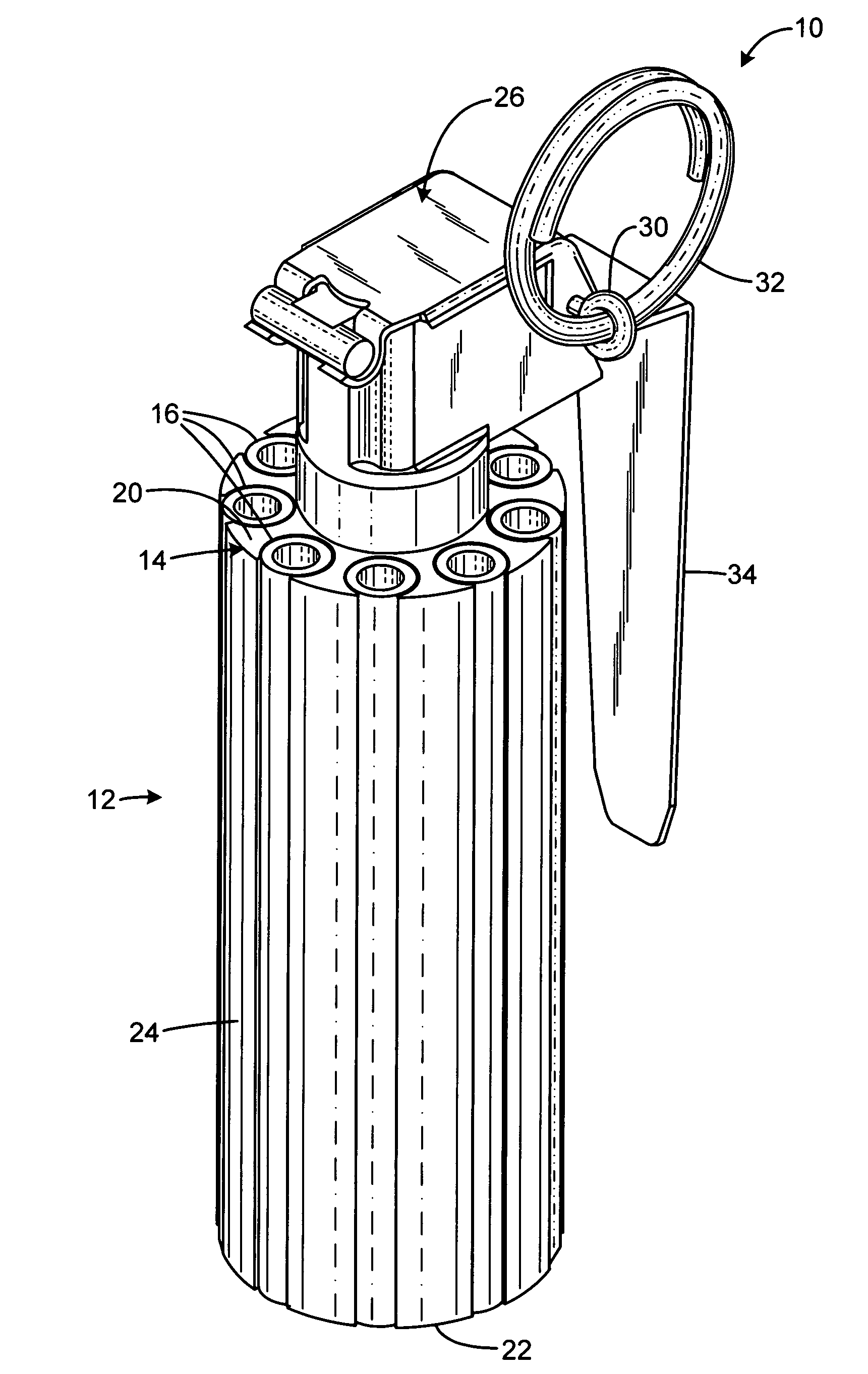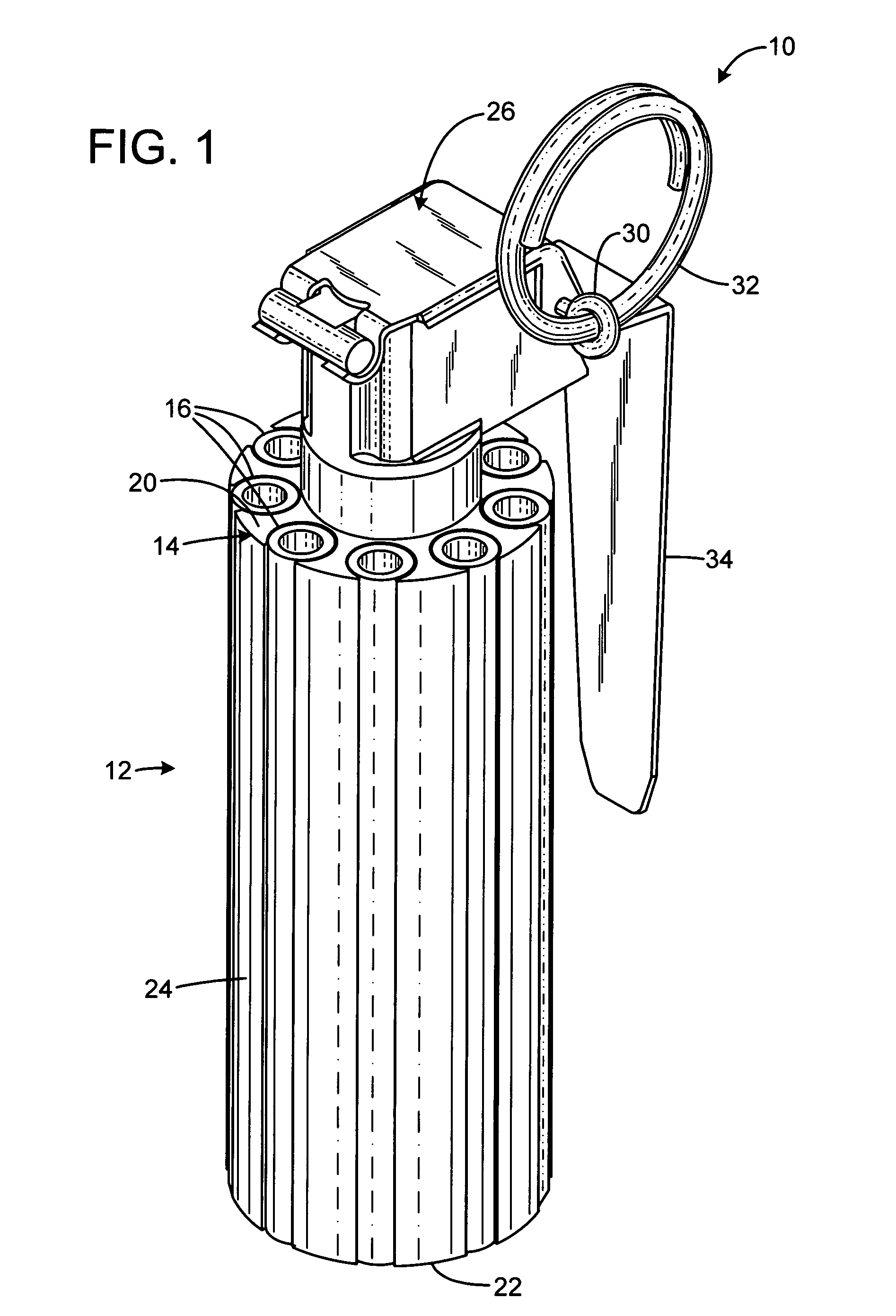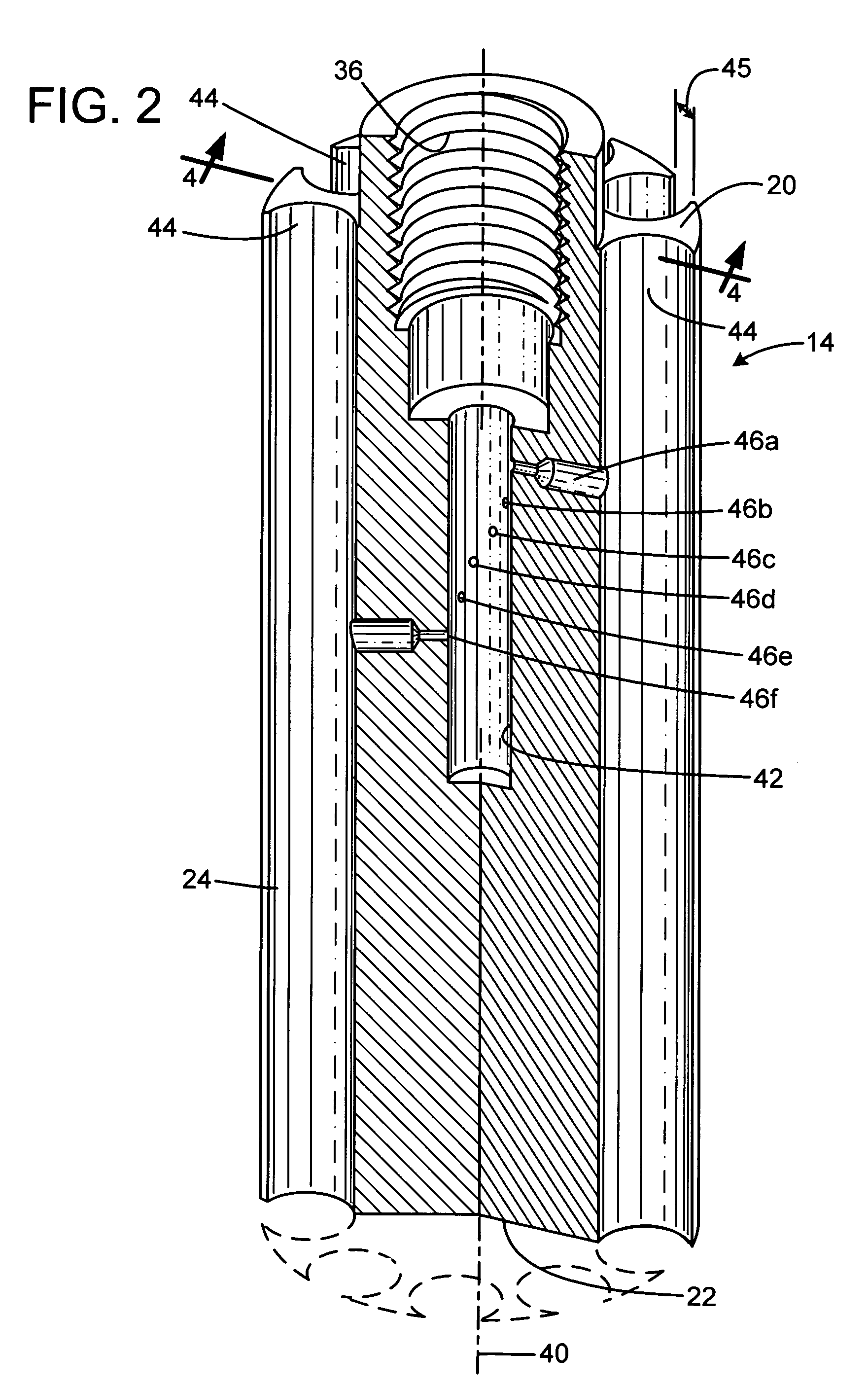Multiple report stun grenade
a stun grenade and multi-report technology, applied in the field of stun grenades, can solve problems such as serious injury, and achieve the effects of minimizing the risk of serious injury, convenient gripping, and advantageous configuration
- Summary
- Abstract
- Description
- Claims
- Application Information
AI Technical Summary
Benefits of technology
Problems solved by technology
Method used
Image
Examples
Embodiment Construction
[0017]FIG. 1 shows a flash-bang pyrotechnic device 10 having a cylindrical body 12 formed of a cylindrical frame 14 holding nine sleeves 16. The body has a top end face 20, a bottom end face 22, and a cylindrical sidewall 24. A fuse assembly 26 protrudes from the top end face and includes a safety pin 30 with connected extraction ring 32 and a spring-loaded paddle 34 that initiates a discharge sequence when the paddle is released after the safety pin is removed.
[0018]FIG. 2 shows the frame 14 in a cut-away view. The frame is a straight cylindrical body formed of a monolithic unitary block of material. In the preferred embodiment, it is formed as an aluminum extrusion, with the source extrusion including all the features that run the entire length of the frame, and with the other features being formed by post-machining. In the description, its form may be described in terms of machining steps to produce it from bar stock as opposed to extrusion, in order to explain the structure more...
PUM
 Login to View More
Login to View More Abstract
Description
Claims
Application Information
 Login to View More
Login to View More - R&D
- Intellectual Property
- Life Sciences
- Materials
- Tech Scout
- Unparalleled Data Quality
- Higher Quality Content
- 60% Fewer Hallucinations
Browse by: Latest US Patents, China's latest patents, Technical Efficacy Thesaurus, Application Domain, Technology Topic, Popular Technical Reports.
© 2025 PatSnap. All rights reserved.Legal|Privacy policy|Modern Slavery Act Transparency Statement|Sitemap|About US| Contact US: help@patsnap.com



